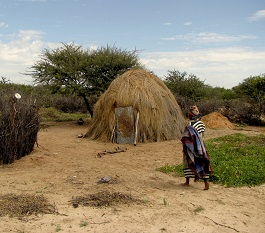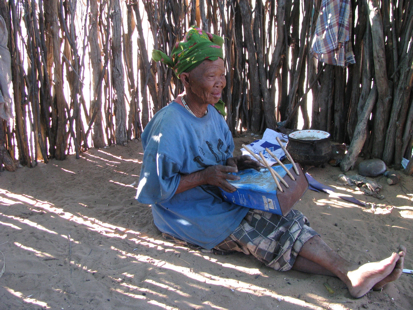

**Note: 100% of the profits from your purchase are given directly back to the Bushman musicians.**

When We Were Free: Bushman Music of Botswana [CD] - $12
You will be redirected to a PayPal webpage. To BYPASS a PayPal login, click "Pay with debit or credit card." **NOTE TO INTERNATIONAL BUYERS: The U.S. Postal Service now charges $13.50 to send the CD internationally, plus the cost of the padded envelope. Consequently I now charge $11.50 for international shipping, giving you about a $3 discount for affordability.
When We Were Free gives listeners a rare fireside glimpse into the ancient, otherworldly music of the Bushman people of the Kalahari Desert.
Recorded in three Bushman villages in western Botswana, this CD includes the intense and fascinating vocal music of the sacred "trance dances" alongside intimate, meditative instrumental selections. The extensive booklet includes color photos, background information on the Bushman race, personal notes on the musicians and their songs, and an unprecedented analysis of the system on which the music functions—the "theory" of Bushman music.
WHEN WE WERE FREE TRACK PREVIEWS:
Note: If the track previews do not work in your browser, you can listen to them HERE.
1
2
10
11
4
5
6
8
9
3
7
12
13
14
Revolutions of Spirit: Bushman Dance [digital album] - name your price
A two-part album available for streaming or download at bushmanmusic.bandcamp.com/music
Revolutions of Spirit consists of more than two hours of a single “trance dance” recorded in Bere, Botswana. Trance dances are the heart and soul of Bushman music. Often lasting through the night, they are intended for healing and communing with the spiritual world. The powerful and complex tapestry of sound produced from only clapping, dance rattles, and a mass of polyphonic vocals is a wonder to hear.
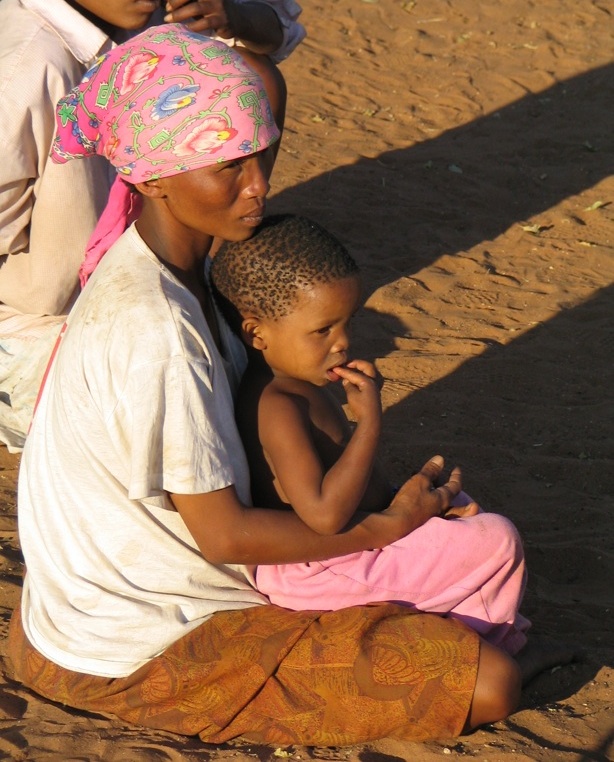
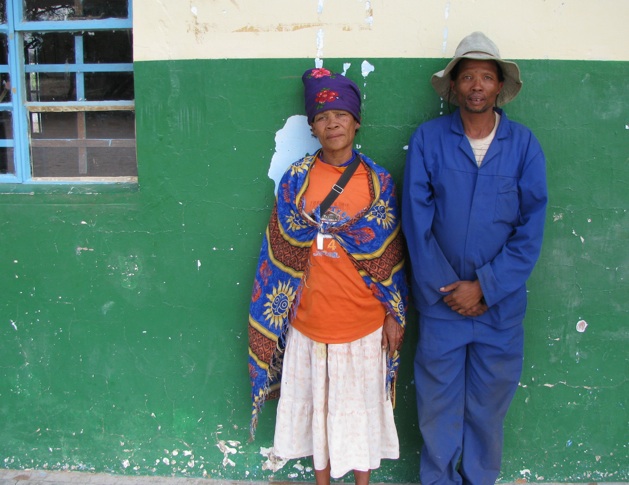



The Bushmen, or San, are the oldest race on Earth. We are told by modern science that they have the most diverse gene pool of any people on the planet, and thus are considered to be the ancestral race of us all.
To the Western world, they may be best known for their languages – dazzling varieties of clicks, pops, and guttural sounds in addition to more familiar vowels and consonants – as well as their romanticized representation in the movie The Gods Must Be Crazy.
They live mainly in the Kalahari Desert and its outskirts, with major populations in Botswana, Namibia, and South Africa. In past times their existence was nomadic. Sleeping in temporary huts, they would gather food from the bush and hunt for game using small poison-tipped arrows. They enjoyed a largely egalitarian society and an economy based on sharing and gift-giving.
With the influx of Western civilization around the Kalahari in the latter half of the 20th century, the Bushmen underwent a profound lifestyle change. They found themselves living in permanent villages, going to public schools and clinics, obeying law enforcement, and getting water from boreholes drilled deep into the earth.
The transition has not been particularly easy or pretty. Most San people are now prevented by law from hunting wild game. And with employment opportunities hopelessly scarce in their tiny villages, many now live an impoverished existence dependent largely on government handouts and, where possible, the raising of a few cattle. The overall feeling is one of marginalization – a race reduced to novelty, to the occasional tourist attraction – and alcoholism has all too often stepped in to take the place of harmony and natural productivity.
We may wonder whether this change was wanted or unwanted, and whether it was inevitable. It is a complex issue. Some Bushmen—particularly among the younger generation—were, and are, quite attracted to the modern lifestyle, with its reliable water sources, medicines, and conveniences. And there is a desire to be involved with the rest of the world, rather than live in a bubble of traditional ways.
However, the actuality of how this largely forced transition has taken place has created an inescapable feeling of brokenness, sadness, and regret in today's Bushman villages. Among elders particularly, the lack of freedom, loss of culture, and unhealthy condition of their people have taken a heavy toll. And among the youth, optimism has not solved the problem of abject poverty.
Is the term "Bushman" derogatory?
The academic community has in recent years adopted the word "San" as the politically correct term to refer to this ancient race, citing a derogatory connotation in the origins of the word "Bushman." However, the word "San" is not without its own derogatory connotations. There are actually many language groups within the Bushman race, and historically the Bushmen referred to these individual groups as different peoples when talking about themselves or each other. In my travels throughout the Kalahari I found that these days, when speaking English, these people most commonly use the term "Bushman" to refer to the overall race.




The Bushman Music Initiative operates with three goals in mind:
-
To try to lend a hand to the Bushman people by providing for them an income based on a valuable, meaningful, and largely neglected aspect of their culture—namely, their music. This in turn demonstrates to the Bushmen an appreciation of their rich and singular musical tradition, and will hopefully help in its preservation.
-
To document this music for posterity while it is still here. For the extraordinary degree of complexity, uniqueness, and beauty that I find in this music, there is an equally extraordinary void in the annals of recorded music where it should be represented. It is perhaps the oldest music on Earth. And with Bushman tradition and culture slowly fading, even vanishing, it is uncertain how long this music will survive in its potent, original form.
-
To create an awareness of the Kalahari Bushmen in the modern world. This includes their incredible musical tradition, their unique history and culture, their friendliness and integrity, and the difficult circumstances they are facing in this pivotal moment of their timeline.
All the songs on When We Were Free and Revolutions of Spirit were recorded in Botswana, in three villages representing three distinct Bushman language groups: the Naro from D'Kar, the Ju/'hoansi from Grootlaagte, and the !Xoo from Bere. The songs were carefully chosen from hundreds of recordings I made over the course of two trips, in 2006 and 2008, totaling nine months. I traveled alone and lived with Bushmen as a guest in their homes, building meaningful personal relationships and gaining invaluable first-hand experience of their culture and music, as well as their situational challenges as a people. I made a third trip in 2011 to hand out completed copies of When We Were Free and to update them on the Initiative.
So you are "non-profit." How much money is really getting back to the Bushman people?
Many non-profit organizations have to support a staff which makes a living off of the products and services they provide, so it can be unclear how much of your money actually serves its intended purpose. I am the one and only staff member involved in this project, and I am volunteering all of my time and energy without compensation, as well as putting up my own travel expenses.
The only deductions from the total sales that will not go directly into the hands of the Bushmen will be the amount paid out of pocket for the expenses of mastering and manufacturing the CD, maintaining the website, and any marketing/advertising that is done. All revenue beyond those expenses is divided among the musicians represented on the CD.
How did this all get started? Was it through a college or some larger organization?
Many years back I heard a recording of Bushman music and it fascinated me. I began exploring whatever I could find about the Bushmen of the Kalahari and their music. Struck by their present situation, intrigued by their culture, and frustrated by the lack of music recordings I could find, the basic idea for this endeavor slowly came together. I traveled to the Kalahari and filled in the details as I went along. It is not associated with any school or other institution or organization.


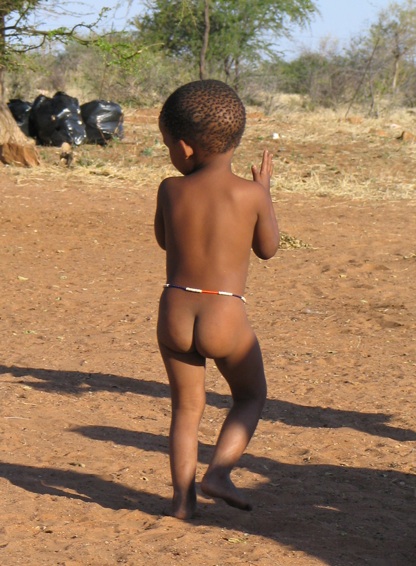

Popular musician Dave Matthews, a native South African, reports that during a visit to a Bushman village he asked a Bushman what the words to a
certain song meant. "There are no words," the man said, "because
these songs all come from before we had words."
This indicates the ancient and sacred nature of Bushman music. It
doesn't resonate with modern sensibilities, but rather deep within the
heart, with a raw and hallowed essence that is common to
all people.
The heart and wellspring of the Bushman musical tradition is the sacred dance, or "trance dance," which takes place at night, generally for the special occasion of healing or communicating with the spirit world. The women sit in a circle around a fire, singing and clapping their hands with a great, raw beauty and power. The healers, generally men, move in a circle around the women's circle, dancing and stomping their feet, and stopping from time to time to focus healing power or spiritual vision on a certain individual. Tied around their lower legs and ankles are rattles made from dozens of small caterpillar cocoons carefully hollowed out and filled with small bits of ostrich eggshell or pebbles.
The singing that is the engine of these dances is complex and fascinating. It is polyphonic, meaning several different melodies are being sung simultaneously. A constant yodeling effect adds a rich and unique texture. The music also usually modulates gradually and constantly upward on a sliding scale, stretching and pushing higher throughout a song. As the music intensifies and the spirit boils higher in the healer, the healer may burst with shrieks or yells, or even fall to the ground as his consciousness leaves his physical surroundings. These dances often last through the night.
In addition to the trance dances, there is music for games and music
for initiation rites, both generally consisting only of group singing and
clapping and intended for dance and movement.
Then there is quiet
music; intimate, personal music for passing time, partly leisure and
partly meditative, using instruments such as the musical bow, the four- or five-stringed zoma,
and the dengho, a Bushman version of the ubiquitous African "thumb
piano."
All these musical types function on a system of harmony truly unique to Bushman music. Most Western music—be it pop, rock, blues, or classical—is based on chords, and these chords are derived from notes of a linear scale. There are certain rules and patterns to Western music which govern chord progressions, melodies, rhythms, bass lines, etc.
Many Westerners listening to Bushman music comment that it sounds random, unorganized, or generally inaccessible or uninteresting. This is because it is being filtered and processed through a system of musical theory in the listener’s brain that it does not abide by. However, it is by no means random, unorganized, or unsophisticated. It does in fact function on the rules of its own distinct, ingenious, and fully developed system of music theory.
The Bushman system is not based on chords, but on a cyclical pattern of
notes.
A Bushman song usually uses only four distinct pitches,
sometimes five. (Western music uses up to twelve.) Each song's identity is a particular melodic pattern which generates the basic skeleton or structure of the song. The melodic pattern is executed on each of the four notes, or levels, of the scale, always ultimately moving downward to begin anew on the adjacent lower note after the pattern is completed. One complete cycle is therefore made up of four repetitions of the melodic pattern, each on a different pitch level, and the cycle itself repeats until the song is communally decided to be over.
In a performance, the statements of the melodic pattern are generally a combination of explicit and implied. Each singer is free to “hover” around his or her chosen vocal range, and sing notes and melodies within that range that are appropriate to the constantly churning melodic pattern underneath. This creates a rich tapestry of complex, improvised polyphony that is truly unparalleled in traditional musical traditions of the world.
It can take a great deal of repeated listening before the Western listener begins to discern the melodic pattern in a particular Bushman song. This is due not only to the layers of polyphony that overlay the melodic core, but also to the often unfamiliar time signatures that are employed.
Much African music uses polyrhythms, usually within the framework of 4/4, 12/8, 9/8, or 6/8 time signatures (if they are to be interpreted in Western terms). Bushman music uses these meters, but perhaps uniquely in African music, also regularly employs such nonstandard time signatures as 7/8, 7/4, 11/8, 13/8, 17/4, and 21/4. (Yes, really, all of those!)
Due to these degrees of complexity, the Western ear often finds little familiar structure to grab hold of and orient itself with, and therefore interprets the music as disorganized. However once the underlying rhythmic meter and melodic structuring pattern are discerned, a musical epiphany occurs and the music begins to resonate and shine with a new power and coherence.
What we have in Bushman music is a system of harmony in constant circular motion, around which endless improvisations and further creativity is possible. No one note is given any more significance than another—in other words, it could be argued that there is no "tonic," or tonal home, which is the basis of most Western music. And taking all Bushman songs together, a huge variety of time signatures are also represented.
It is, in a sense, egalitarian music. Organic, fluid and natural; ingeniously simple while at the same time dazzlingly complex; bursting with freedom and creativity, devoid of ego, rooted in interdependence and cooperation.
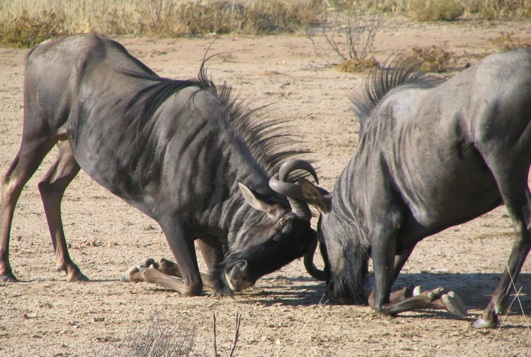





Clark Wheeler may be contacted at Bushman.Music.Initiative@gmail.com.
Also check out the Initiative's Facebook page for more photos and discussion, and give us a like!

Website constructed by Aris Aurellano
www.arisaurellano.com
